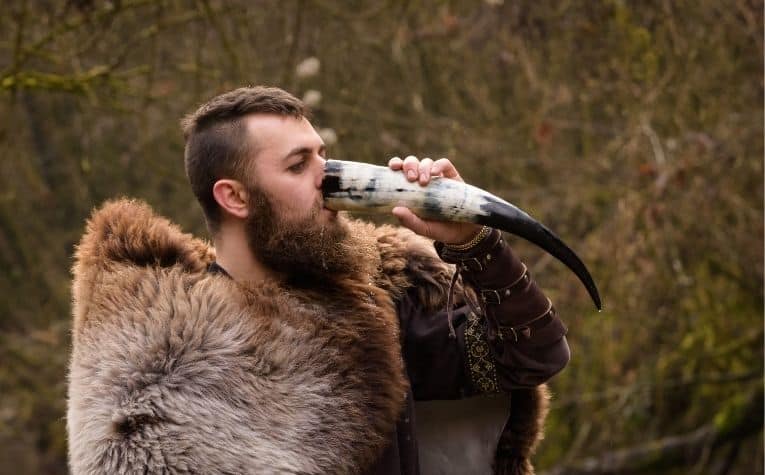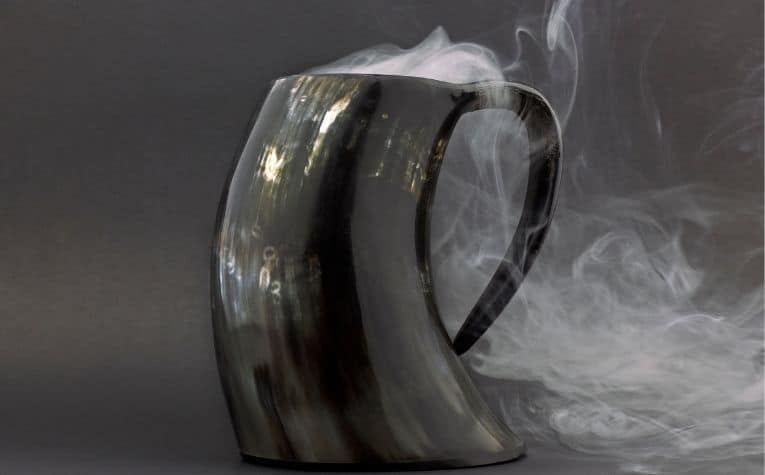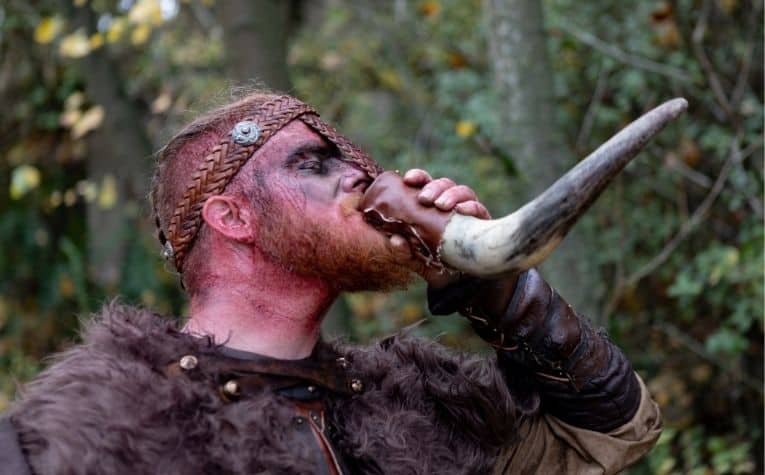Although Vikings are among the most recognizable and celebrated figures from any period in history, much remains unknown about them.
Questions about how they lived are unanswered to this day, and there are widespread misperceptions about their rituals and deeds.
Included among these historical inaccuracies are tales of savage practices.
Viking rituals for paying homage to Norse gods and spirits were sacred, and old traditions dictated the manner in which certain rites were performed.
Although there are obscure references to the practice, it is improbable that the questionable Viking practice of drinking blood ever occurred.
Scholars have been able to piece together a riveting but incomplete picture of the rituals that the Vikings held sacred.
Further clouding reality is the resurgence in popularity of all things Viking, both on-screen and in other forms of entertainment, including video games.
Modern portrayals of the Vikings have done nothing to dispel myths of their legendary violent tendencies and gruesome rituals.
Did Vikings have permanent designs carved onto their skin? See How Vikings Got Tattoos (and Why) to learn more.

Did Vikings Really Drink Blood? Fact vs. Fiction
The Vikings did not record their own written history. For centuries, Scandinavia’s people relied on oral traditions to pass down their culture from one generation to the next.
Virtually everything that was written about the Vikings was penned by non-Vikings, including the likes of:
- their victims, such as monks at the monasteries that were sacked during raids
- third-party observers who were trading partners or were emissaries from other cultures
- poets and historians (most of whom were Christian) who wrote of the Vikings and their ways centuries after the Viking Age ended
As a result, many accounts were blatantly biased against the North’s heathens, portraying them as bloodthirsty savages who worshiped their gods through pagan ritual practices.
Many of the Viking religious and spiritual traditions were shocking to Christian sensibilities that prevailed throughout Europe during the Middle Ages, much like Viking raids on monasteries, which were viewed as blasphemous.
Of all the traditional Viking rites, the one that was perhaps viewed with outsiders’ greatest dismay and consternation was animal sacrifice.
And it may have been this very ritual that gave rise to the murmurs that the Vikings drank blood.
The Vikings were religious people. See Why Did the Vikings Worship Odin? to learn more.

The Purpose of Viking Rituals
Living through Scandinavia’s harsh winters and struggling to maintain year-round sustenance, the Vikings were accustomed to difficult conditions that could vary in severity from year to year.
As raiders, traders, and explorers, they also spent a significant amount of time on the high seas.
They were often at the mercy of unpredictable weather conditions in the rough Northern Atlantic. (Also see Why Did the Vikings Say Skol?)
The Vikings were hardy people who believed that their gods would protect them from harm and, when called upon, also bless various aspects of their daily lives.
However, during the Viking Age, Norse religion revolved around the concept of reciprocity.
This meant that worshipers were expected to make ritualistic offerings to their gods in exchange for the favors they were requesting. (Also see 10 Famous Vikings from History)
By lavishing gifts and making solemn gestures showing respect toward their Norse deities, the Vikings believed that these gods would return the favor and fulfill their spiritual obligations by delivering on the blessing or favor that was requested.
Common examples of the types of aid that the Vikings sought from their gods include:
- Victory on the fields of battle
- Bountiful harvests and favorable growing conditions
- Fertility and good fortune in matters of love (e.g., marriage)
The ultimate display of reverence to a Norse god was the sacrifice of animals, performing special ceremonial rites with the blood collected, and then cooking and feasting on the meat in the god’s name and honor. [1]
Did Vikings believe in dragons? See What Dragons Meant to Vikings to learn more.

The Viking Blot and Other Rituals
Sacred rituals involving the sacrifice of animals were known as a blot in Old Norse.
Some of the most vivid accounts of these ceremonies were written by the Icelandic poet Snorri Sturluson, whose works are considered the most comprehensive and revealing writings concerning the Vikings and how they lived.
Note: It is important to mention, however, that Sturluson was a Christian and produced his works centuries after the Viking Age ended.
While scholars and historians heavily rely on his accounts, they should also be taken at face value, meaning with full recognition of potential bias or deference to Christian sensibilities.
According to Sturluson, a mid-winter blot was a major social and religious event held annually in a king or warlord’s longhouse.
Participants came from afar to attend and were expected to bring food and drink to share.
At the heart of the event was the ritualistic slaughter of domestic animals like sheep and horses.
The sacrificial ritual consisted of the following rites [2]:
- As the animals were being killed, their blood was collected in bowls
- Blot attendees were then given brushes and directed to paint the temple altar red with the blood, along with the inner and outer walls
- Viking men were then splattered with animal blood
Other Viking Rituals Involving Animal Sacrifice
According to other accounts of Viking rituals involving animal sacrifice, the blood collected from sacrificial animals was sprinkled over small figurines representing particular Norse gods.
Small amounts were also dabbed on participants’ faces.
According to Viking beliefs, these rites symbolized the unification of humankind and their gods.
Interestingly, there were even specific associations between different types of animals that were sacrificed to win favor with particular Norse gods [3]:
- For Thor, a goat was to be sacrificed
- For the goddess Freyja, a sow was to be sacrificed
- For Freyr, a boar or horse was to be sacrificed
Seafaring is a significant part of the Vikings’ legacy. See Here’s Why Vikings Used Longboats to learn more.
There is No Evidence that the Vikings Drank Blood
What is important to note about the detailed descriptions of Viking sacrificial rituals that history provides is what is conspicuously absent.
While much has been written about the Viking blot and the significance of animal blood in the performance of the blot and other rituals, there are no accounts even suggesting that the participants consumed any of the blood during these rituals.
The Viking Myth of the Mead of Poetry
One of the most popular Viking legends is the tale of the Norse mead of poetry, where not only was blood consumed, it was highly sought-after by many, including none other than the mighty all-father Odin himself.
It is not beyond the realm of possibility that this oft-recited myth may have contributed to the notion that Vikings drank blood.
As the story goes, the two factions of Norse gods known as the Aesir and the Vanir finally settled long-running differences.
They commemorated the occasion by spitting into a vessel and fashioning a man named Kvasir from the spittle.
Kvasir was blessed with unmatched wisdom and spent his time traveling around, sharing his vast intellect and answering any question that was posed to him.
Tragically for Kvasir, he encountered two wicked dwarves named Fjalar and Galar, who murdered him and drained all the blood from his body.
They then blended Kvasir’s blood with honey to create a magical brew that gave anybody who drank it the gift of poetry and supreme intellect.
In a twist of fate, this elixir passed hands from the murderous dwarves to a giant named Suttung.
Thus was created the mead of poetry, a cocktail of blood and honey that eventually caught the eye of Odin, who, in his never-ending quest to acquire greater wisdom and enlightenment, set his sights on obtaining this brew.
Through cunning, trickery, and some shape-shifting, Odin succeeded in his mission and, in so doing, not only gained the gift of poetry for himself but also shared a bit of it with humankind [4].
Final Thoughts
The Vikings were brutal and ruthless warriors, perhaps even bloodthirsty. Their pagan rituals involved animal sacrifice, but they did not drink blood.
